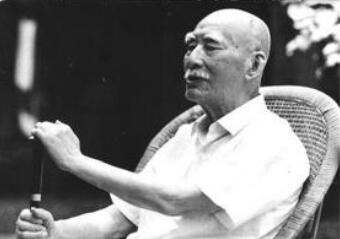Ye Shengtao(1894~1988), original name Ye Shaojun, courtesy name Shengtao, was a Chinese writer and teacher known primarily for his vernacular fiction.
叶圣陶(1894~1988),原名叶绍钧,字圣陶。作家、教育家,主要以白话小说闻名。
Ye taught at primary schools after his graduation from secondary school and in 1914 began writing short stories in classical Chinese for several periodicals.
叶圣陶中学毕业后做了小学教员。1914年开始写短篇文言小说,发表在数家期刊上。
Influenced by the May Fourth Movement, he turned to writing in the vernacular and in 1921 was one of the founders of the Literary Research Association, which called for a reality-oriented literature.
在五四运动的影响下,叶圣陶开始写白话小说。1921年叶圣陶参与创建了“文学研究会”,提倡“文学为人生”。
He worked as a teacher and editor and, with Zhu Ziqing, founded the monthly Shi("poetry")in 1922.
叶圣陶在做教师的同时也做编辑,1922年他和朱自清一起创办了《诗》月刊。

In the 1920s Ye wrote a considerable number of short stories portraying the life and characters of intellectuals and townspeople, collected in Gemo (1922;"Estrangement"), Huozai(1923;"Conflagration"), Xianxia(1925;"Below theHorizon,"), Chengzhong(1926; "In the City"), Weiyanji(1928; "Unsatisfied"), and Sisanji (1936;"At Forty-three").
20世纪20年代,叶圣陶写了大量的短篇小说,描绘知识分子和城镇居民的生活和性格特征。这些短篇小说分别收集在《隔膜》(1922)、《火灾》( 1923) 、《地平线下》(1925)、《城中》(1926 )、《未厌集》 ( 1928)和《四三集》 (1936)里。
The short story "Panxiansheng zai nanzhong"("Mr. Pan in Distress"), published in Xianxia, is a small masterpiece.
收在《线下》里的短篇小说《潘先生在难中》是一篇具有代表性的作品。
From 1927 Ye edited the Xiaoshuo yuehao("Fiction Monthly").
从1927年开始叶圣陶编辑《小说月报》。
In 1928 he published the novel Ni Huanzhi(schoolmaster Ni Huanzhi), which chronicles the life and times of an intellectual from the time of the Chinese Revolution of 1911~12 to 1927, when the Northern Expedition against warlords came to an abrupt end.
1928年,叶圣陶发表长篇小说《倪焕之》,记录了一个知识分子的生活和他所处的时代。这段记录从1911~ 1912年的辛亥革命开始到北伐突然结束的1927年终止。
The novel was recognized as one of the landmarks of the new vernacular literature.
是公认的新白话文学的里程碑之一。
Following the Japanese invasion of Mukden(now Shenyang) in 1931, Ye moved with his family to the wartime capital of Chongqing, where he resumed teaching.
1931年日军入侵奉天(今沈阳)之后,叶圣陶举家迁至战时首都重庆,又重新当起了教师。
He returned to Shanghai after Japan's defeat and soon faced persecution for his participation in the democracy movement.
日本投降后,叶圣陶又回到上海,但他很快就因为参加了民主运动而面临着迫害。
He managed to leave Shanghai for Beijing.
叶圣陶设法离开上海来到了北京。
His sketches, notes, and other miscellanea, remarkable for their simplicity and fluidity, were collected in Jiaobuji(1931;"Footsteps") and Weiyanju xizuo(1935; "Compositions from My Studio”).
叶圣陶的小品文、笔记和其它的杂录因为简朴流畅而值得注意。这些著述被收在《脚步集》 ( 1931 )和《未厌居习作》( 1935 )里。
His Daocaoren(1923;The Scarecrow) and Gudai yingxiong de shixiang (1931;The Stone Statue of an Ancient Hero) are both notable works in Chinese children's literature.
叶圣陶的《稻草人》(1923)和《古代英雄的石像》( 1931 )是中国儿童文学的著名作品。
A selection of Ye's short stories was translated into English and published as How Mr. Pan Weathered the Storm (1987).
叶圣陶的短篇小说已经被选译成英语,选集名为《潘先生是如何经受住暴风雨的》(1987 )。












